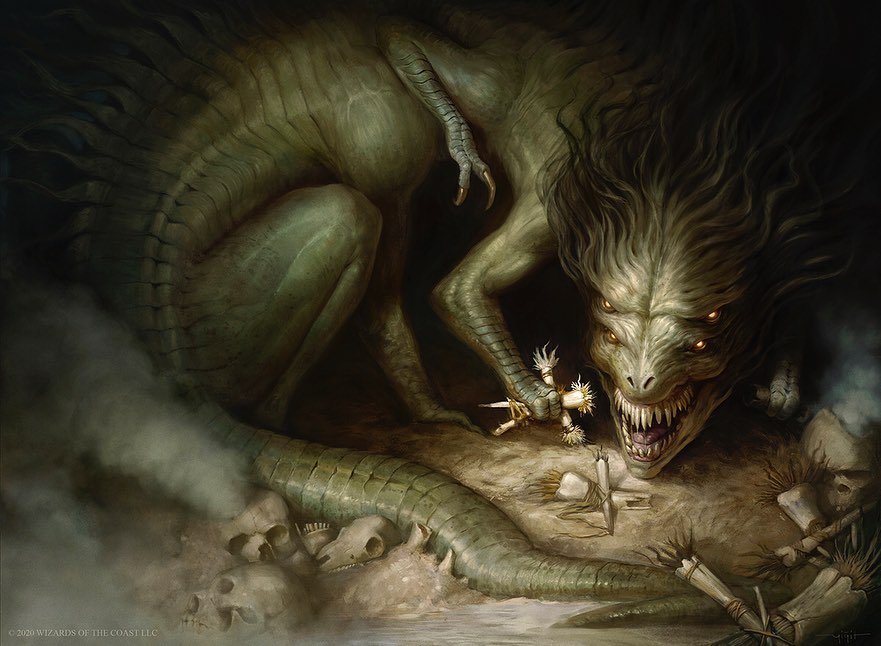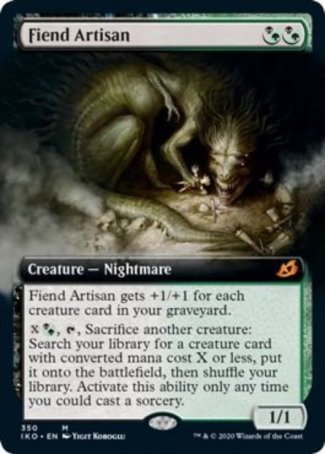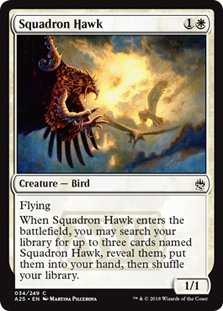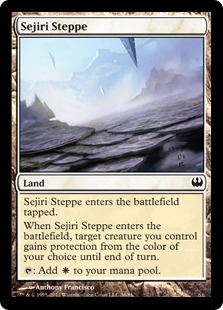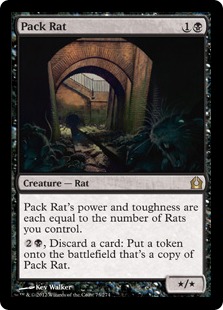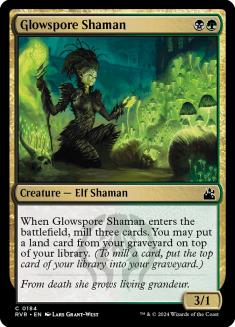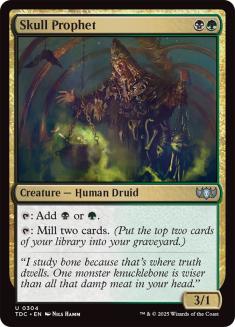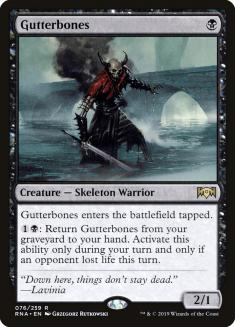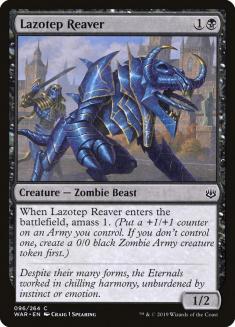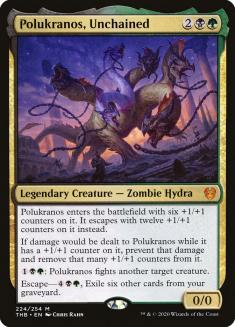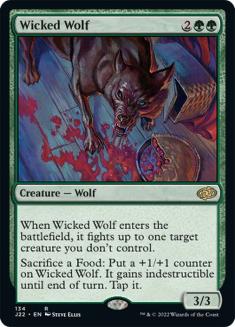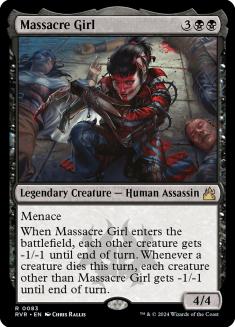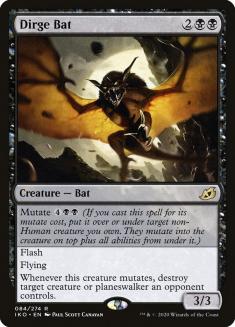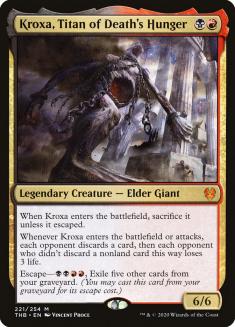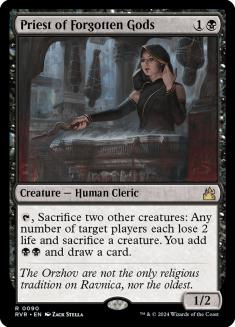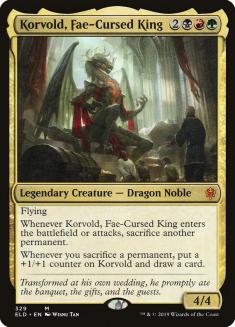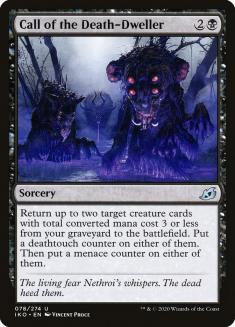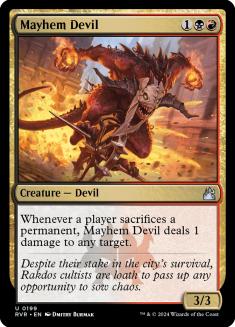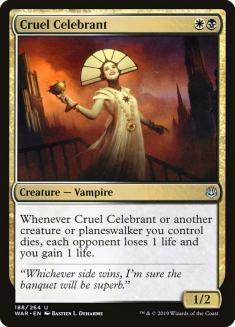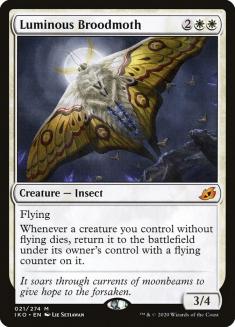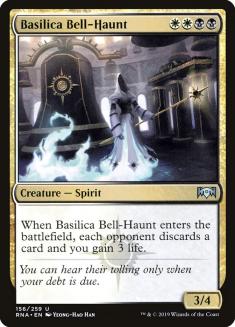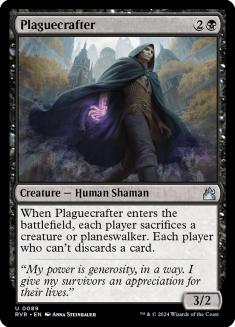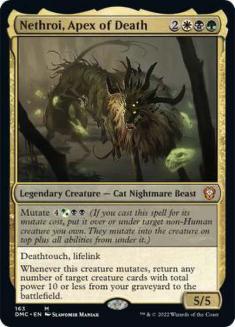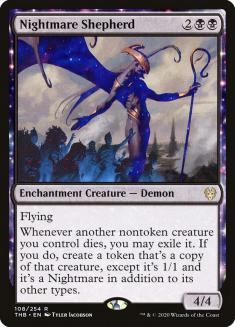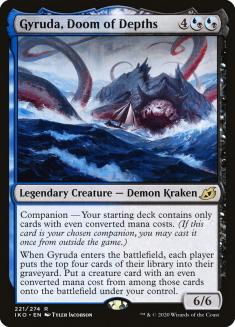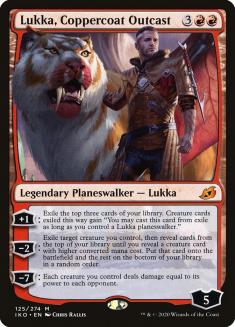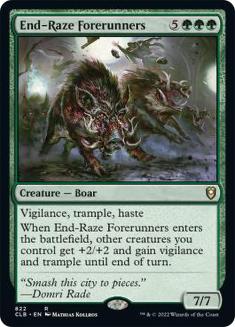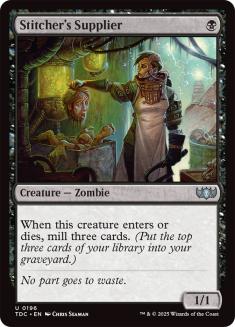Repeatable search is good. Efficient scaling creatures are good. Both on the same card?
That’s absolutely amazing.
The first reaction a lot of people will have to Fiend Artisan is thinking of Birthing Pod, but the play patterns with Fiend Artisan will be much closer to Knight of the Reliquary. The best part of the rate here is the growing body and every Fiend Artisan deck should be build to maximize that.
Unlike Birthing Pod, you aren’t scripted into chains of creatures. If anything, you want to be getting similar, low-costed creatures over and over because the ability has a full retail cost associated with it, or even be getting the same creature multiple times, looping a discard or removal effect through all the copies in your library.
But the biggest thing that reminds me of Knight of the Reliquary is that untapping with Fiend Artisan means your opponent is going to struggle to remove it. Back in Worldwake Standard, Knight of the Reliquary untapping meant they could search up Sejiri Steppe and protect it from a removal spell. With Fiend Artisan, the play pattern is proactive. Activate Fiend Artisan, find a second Fiend Artisan, turn your next creature into a Fiend Artisan too, this grows the earlier Artisans…..
Maybe we should be thinking about Fiend Artisan as the new Pack Rat instead. A Pack Rat you cast as a 10/10 when you draw it later on.
One other thing that points away from a toolbox strategy with Fiend Artisan is the anti-synergy between toolbox strategies and self-mill to maximize the size of Fiend Artisan. The traditional adage is that random mill doesn’t statistically alter the cards your opponent will draw, but this is based on the idea that you won’t see every card in your library and a random card from the top is the same as the one ten cards down until you look at it. When you start searching, each mill is a chance you no longer have access to a given card when you look at the whole of your library later. This isn’t to say you can’t play one-ofs in a Fiend Artisan deck, but I would not heavily lean on them if my deck was self-mill focused.
Creatures (33)
- 3 Midnight Reaper
- 1 Golgari Findbroker
- 1 Plaguecrafter
- 1 Gutterbones
- 1 Lazotep Reaver
- 1 Massacre Girl
- 1 Cavalier of Night
- 4 Gilded Goose
- 3 Murderous Rider
- 1 Wicked Wolf
- 4 Cauldron Familiar
- 2 Woe Strider
- 2 Polukranos, Unchained
- 4 Fiend Artisan
- 4 Skull Prophet
Lands (23)
Spells (4)

This is more a blueprint than a finalized list, but there are some key lessons here.
The good self-mill in Standard is very limited, and as a result I’ve let the toolbox grow out to include good singletons that are fine to drop. Glowspore Shaman just isn’t a playable rate. Skull Prophet is, but I would much rather use the first two modes of attacking with a 3/1 or tapping for mana most of the time, especially when Fiend Artisan is such a mana-intensive card.
Most of the less expensive toolbox targets are aimed at assuring you have fuel for future activations. Really, Gilded Goose plus Cauldron Familiar might be enough here since you can use the Gilded Goose Food to generate the bonus Cat body.
Another part of the pull to a toolbox is the expensive cards all feel interchangeable. Polukranos, Unchained or Wicked Wolf? One is probably better at a given time, but the second of each is bad to draw and it’s all close enough. Same with Massacre Girl or Cavalier of Night. The closest decision above three mana is Woe Strider or Murderous Rider, and the answer might just be wanting more of both.
Sadly, Fiend Artisan does not work with mutate and I don’t really want to play any of the currently revealed mutate cards at their stated rate. Fiend Artisan also isn’t a good mix with the Theros Beyond Death Titans, both since escape clashes with wanting a full graveyard and because the sacrifice is sorcery-speed.
The other extremely powerful card I’ve omitted is Priest of Forgotten Gods, and honestly that might be a mistake. It’s very possible this is just a better card than Skull Prophet, and even if your two-drops clash for creature resources you should be winning games where you activate either one. If you play Priest of Forgotten Gods, I would heavily cut back on cards that cost more than three mana for more things that you can cheaply cast and sacrifice.
This does all change if you splash a color for Korvold, Fae-Cursed King. If you go Jund, you should just play a single Massacre Girl and assume you’re finding Korvald, Fae-Cursed King over everything most of the time you have the mana to do so.
Another core draw to Jund is Mayhem Devil, and that card got an exceptional new pairing with Call of the Death-Dweller. Applying deathtouch to a pinger has been a winning Constructed plan before, and simply returning Fiend Artisan and something to sacrifice is a promising application of Call of the Death-Dweller in non-combo situations.
Creatures (27)
- 1 Paradise Druid
- 1 Lazotep Reaver
- 4 Mayhem Devil
- 1 Massacre Girl
- 4 Gilded Goose
- 3 Korvold, Fae-Cursed King
- 1 Wicked Wolf
- 4 Cauldron Familiar
- 2 Woe Strider
- 4 Fiend Artisan
- 2 Skull Prophet
Lands (24)
Spells (9)

The other big draw to Mayhem Devil with Fiend Artisan is being able to find the same card multiple times. The second Mayhem Devil really stretches the range of what you can clear off a battlefield, and Fiend Hunter finding Mayhem Devils might even be able to stand up to a Nissa, Who Shakes the World.
But Rakdos isn’t the only place you can stack a death effect. Cruel Celebrant remains Standard-legal to everyone’s surprise, and Luminous Broodmoth is quite the late-game sacrifice engine payoff. Just because Fiend Artisan locks you into Golgari in Commander doesn’t mean you need both halves of the hybrid in Standard.
Creatures (33)
- 2 Midnight Reaper
- 4 Hunted Witness
- 1 Plaguecrafter
- 2 Tithe Taker
- 4 Priest of Forgotten Gods
- 4 Cruel Celebrant
- 1 Lazotep Reaver
- 4 Cauldron Familiar
- 3 Woe Strider
- 1 Alseid of Life's Bounty
- 3 Luminous Broodmoth
- 4 Fiend Artisan
Lands (23)
Spells (4)

The Orzhov list is much more interested in additional sacrifice outlets thanks to Hunted Witness and Luminous Broodmoth, and even more so when you put those cards together, allowing you to actually build out a battlefield with each sacrifice iteration.
It’s been a while since Basilica Bell-Haunt was remotely Standard-playable, but it would be a welcome sideboard option in this deck. Chaining discard effects off Fiend Artisan gets oppressive quickly, as does chaining lifegain. With Luminous Broodmoth, you can even create a short lock of sacrificing the Basilica Bell-Haunt in your opponent’s draw step to something other than the Artisan to clear a freshly drawn card. Plaguecrafter can serve a similar goal and is significantly powered up by Luminous Broodmoth without any third-party help.
The one angle I couldn’t quite figure out was using Nethroi, Apex of Death effectively. In theory, ten power should be enough to perform some Rally the Ancestors-style shenanigans if you’re returning one-power Cruel Celebrants, but seven mana to mutate out Nethroi is a lot. Fiend Artisan even only has one power in the graveyard, so a Nethroi trigger that’s short of true lethal can still be massively threatening.
Skull Prophet is clearly part of this equation since it both pushes you towards seven mana and fills your graveyard, and you probably want Acolyte of Affliction as a way to recur a Nethroi from your graveyard, but there isn’t great way to deep dive into your library for more action that won’t already win the game. You could Fiend Artisan your way through everything you needed, but at that many activations of such a powerful creature, why are you also casting a seven-drop to win the game?
Luminous Broodmoth isn’t the only recursion creature in the format. We had Nightmare Shepherd for a full set and people posed a lot of potential uses for it. Fiend Artisan fits right into one of them.
Creatures (32)
- 4 Gray Merchant of Asphodel
- 1 Midnight Reaper
- 1 Plaguecrafter
- 1 Gutterbones
- 1 Lazotep Reaver
- 1 Massacre Girl
- 4 Yarok's Fenlurker
- 3 Knight of the Ebon Legion
- 1 Rankle, Master of Pranks
- 4 Cauldron Familiar
- 3 Woe Strider
- 4 Nightmare Shepherd
- 4 Fiend Artisan
Lands (24)
Spells (4)

Fiend Artisan plays extremely well with Gray Merchant of Asphodel. While that card isn’t that inherently powerful, it gets much better with a double-black two-drop that lets you find multiple Merchants or set up Nightmare Shepherd.
These same synergies play out in the context of the Sultai Vannifar deck that was floated at the start of Theros Beyond Death Standard, and Fiend Artisan represents another way to find the deck’s namesake as well as a solid backup plan. The untap effects don’t work quite as well with Fiend Artisan as they do with Prime Speaker Vannifar, but Fblthp, the Lost sure does.
The other oddball option is Gyruda, Doom of Depths, but it seems like a struggle to get that working. You really need cheap fodder for Fiend Artisan’s mana-intensive ability, and preferably cheap fodder that leaves free bodies around for extra sacrifices, and all of that costs one mana. You can play Stonecoil Serpent, I guess, but are you really putting Ugin’s Conjurant or Chamber Sentry in your deck to start each game with a bonus Gyruda? Some of the draw to Gyruda is the hybrid cost and being able to lean mono-black, but you can’t play the five-drop Gray Merchant of Asphodel if you do that. Maybe the cards come together in the future for this deck, but as is you aren’t even close.
Lukka, Coppercoat Outcast might be the better version of this mana-cost-constrained deckbuilding. If you aren’t aware of the punchline, the big payoff with Lukka is building your deck so most of your creatures sit at some peak converted mana cost, playing a couple of some giant whammy, and using him as a Polymorph variant that isn’t totally creature-exclusive. Two seems like a good place to stop with Paradise Druid and Incubation Druid as ways to cast your giant thing
The main reason I haven’t built a decklist? Come on, the set is literally Ikoria: Lair of Behemoths. If big pigs are the best thing to cheat out in Standard after the full set is revealed, what are they even doing out in Renton?
While it isn’t in Standard, the card Fiend Artisan really wants to pair with is Stitcher’s Supplier. Modern is a little too fast and hostile for that, but Pioneer might be right on the nose. Narcomoeba and Haunted Dead provide plenty of spare parts to turn into more threatening bodies or additional mill.
Creatures (27)
- 4 Narcomoeba
- 4 Satyr Wayfinder
- 4 Prized Amalgam
- 1 Decimator of the Provinces
- 4 Haunted Dead
- 2 Scrapheap Scrounger
- 4 Stitcher's Supplier
- 4 Fiend Artisan
Lands (20)
Spells (13)
Sideboard

That’s it. That’s the deck. I took the list Ross Merriam was winning with prior to Theros Beyond Death, cut the Gurmag Anglers for Fiend Artisan because it’s better overall and better in multiples, and wrapped it back up.
This should really underscore the point of Fiend Artisan. The card is just good by itself. There are many natural shells that support playing a bunch of creatures and then want to find specific creatures, yet also are fine just bashing faces in with a two-drop.

